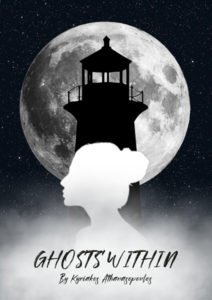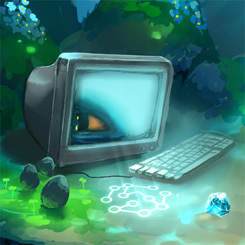See here for my IFComp 2021 scoring and reviewing rubrics.
Plane Walker opens as an intriguing thriller aboard an empty plane. Not just any plane—you wake up mid-flight to discover you’re a passenger aboard a jumbo jetliner devoid of travelers or crew. Your destination on your ticket has been mysteriously defaced. While this rings out like the set-up for a Twilight Zone episode or a Hollywood action movie, the opening lines hint at something more thoughtful:
You awaken to the comfortable drone of the aeroplane’s engine, feeling rather disoriented after a long sleep. Then again, you’ve felt disoriented almost your whole life, as if you’ve been living in an unreal dream. … Only one thing are you sure of: that you do not belong on this plane.
The game is minimal in its prose and detail, and does not waste the player’s time by attempting to simulate with pedantic accuracy every cubbyhole and feature of the passenger jet. The first act of the game is spent moving up and down the plane’s aisle attempting to understand the situation you’re in, and how to extricate yourself from it.
I loved the thriller intensity of the set-up and the speed with which the game cuts to the chase. Within a few moves I knew the stakes. It’s a locked-room mystery, but the locked room is 20,000 feet in the air.
Some of prose text is pleasantly existentialist, almost philosophical in its quiet resignation:
> get in toilet
You try to step into the loo, but the clashing of worlds prevents it.
The premise is exciting, but some authorial decisions undercut it. One early puzzle requires a double EXAMINE, that is, you must look at the same object twice to discover the detail. I’m not a fan of such obstacles. Another early puzzle is essentially a brute-force problem—the game essentially admits as much, so at least the author recognizes it. Removing yourself from the plane is a head-scratcher, a strained management of inventory (although a couple of clues suggests there’s a logic to it that eludes me). I spent a great deal of time working through it, and had to resort to the walk-through to complete the first act.
Still, I found myself amazed when I stopped playing to learn that my score was a paltry 16 out of 111. The start of the second act suggested the game was only winding up. Would I keep playing? I’m not certain. But I appreciate the high stakes and the conspiratorial intrigue of an empty jetliner flying high over Arctic—or is it Atlantic?—waters.


